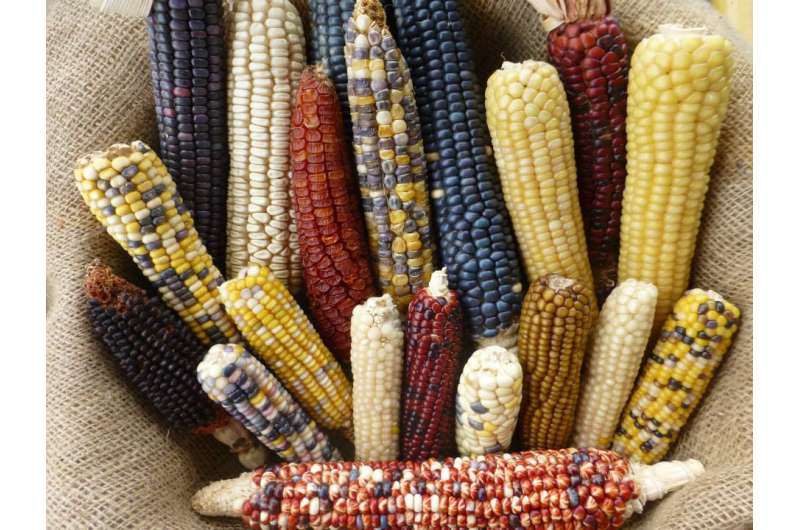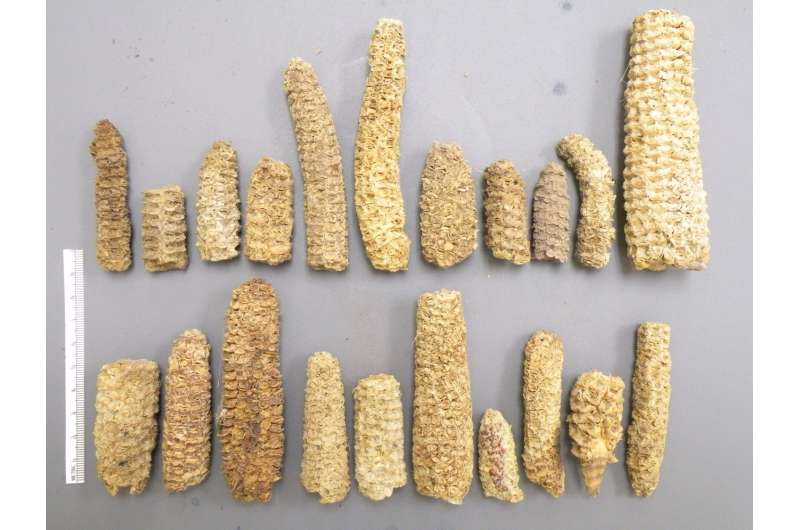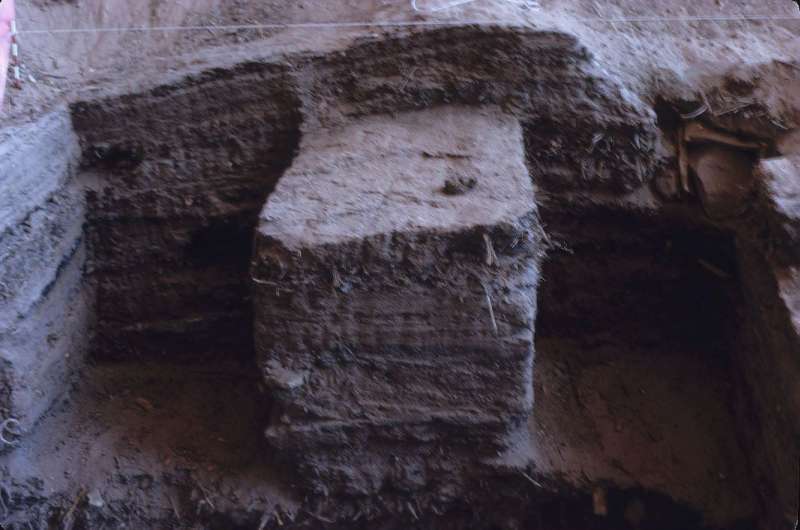August 4, 2017 report
Genome sequencing shows maize adapted to highlands thousands of years ago

(Phys.org)—An international team of researchers has found evidence showing that maize evolved to survive in the U.S. southwest highlands thousands of years ago. In their paper published in the journal Science, the group outlines their genomic study, which revealed the genetic changes that allowed the plant to live in the harsher environment.
Maize, more commonly known as corn, originated in Mexico and made its way to what is now the southwestern U.S. approximately 4,000 years ago. In doing so, it quickly became one of the most important crops in the North America. But, as the researchers note, it did not make its way into the highlands for another 2,000 years, a development that has puzzled archaeologists. To better understand why the delay occurred, the researchers studied samples of 2,000-year-old maize cobs found in a cave back in the 1970s in Utah's highlands.
To learn more about its physical attributes, they sequenced the genome of 15 of the cobs and compared the results to other maize lines. They report that the maize plants around the cave area were not as tall as other maize plants that grew at lower elevations and that it had more branches—in short, they describe the plants as more bushy than other maize plants, a trait that allowed the plant to thrive in colder places. They also found evidence that the plant flowered earlier than most other maize plants, an attribute that would help it produce seeds before the earlier frost at higher elevations.
As the plants evolved to withstand the harsher environment, early people living there began to introduce maize into their diet, just as other early people had done in the southwest lowlands thousands of years earlier.

The researchers suggest that learning more about how maize evolved to survive in the colder highlands offers insights as climate change forces many crop plants to do the same to survive in new conditions. They also noted that one type of maize high in carotenoids, which is now used to make popcorn, evolved in the southwest part of what is now the U.S. and not in Mexico.

More information: Kelly Swarts et al. Genomic estimation of complex traits reveals ancient maize adaptation to temperate North America, Science (2017). DOI: 10.1126/science.aam9425
Abstract
By 4000 years ago, people had introduced maize to the southwestern United States; full agriculture was established quickly in the lowland deserts but delayed in the temperate highlands for 2000 years. We test if the earliest upland maize was adapted for early flowering, a characteristic of modern temperate maize. We sequenced fifteen 1900-year-old maize cobs from Turkey Pen Shelter in the temperate Southwest. Indirectly validated genomic models predicted that Turkey Pen maize was marginally adapted with respect to flowering, as well as short, tillering, and segregating for yellow kernel color. Temperate adaptation drove modern population differentiation and was selected in situ from ancient standing variation. Validated prediction of polygenic traits improves our understanding of ancient phenotypes and the dynamics of environmental adaptation.
Journal information: Science
© 2017 Phys.org



















